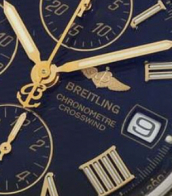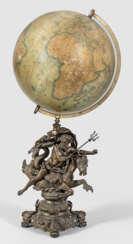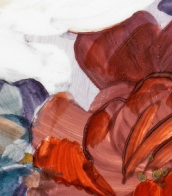julius lange

Julius Lange is a German painter. Most of his paintings are landscapes, mainly of the mountains.
He studied painting at the Munich and later at the Dusseldorf Academy of Arts with Johann Wilhelm Schirmer.
Worked for a long time in Northern Italy, including Venice and Milan, receiving commissions from local academies and nobles. From 1868 he held the position of court painter in Munich and painted many works for King Maximilian II and his son King Ludwig II, as well as interior designs for the royal castles Herrenchiemsee and Linderhof.


Julius Lange is a German painter. Most of his paintings are landscapes, mainly of the mountains.
He studied painting at the Munich and later at the Dusseldorf Academy of Arts with Johann Wilhelm Schirmer.
Worked for a long time in Northern Italy, including Venice and Milan, receiving commissions from local academies and nobles. From 1868 he held the position of court painter in Munich and painted many works for King Maximilian II and his son King Ludwig II, as well as interior designs for the royal castles Herrenchiemsee and Linderhof.


Julius Lange is a German painter. Most of his paintings are landscapes, mainly of the mountains.
He studied painting at the Munich and later at the Dusseldorf Academy of Arts with Johann Wilhelm Schirmer.
Worked for a long time in Northern Italy, including Venice and Milan, receiving commissions from local academies and nobles. From 1868 he held the position of court painter in Munich and painted many works for King Maximilian II and his son King Ludwig II, as well as interior designs for the royal castles Herrenchiemsee and Linderhof.


Julius Lange is a German painter. Most of his paintings are landscapes, mainly of the mountains.
He studied painting at the Munich and later at the Dusseldorf Academy of Arts with Johann Wilhelm Schirmer.
Worked for a long time in Northern Italy, including Venice and Milan, receiving commissions from local academies and nobles. From 1868 he held the position of court painter in Munich and painted many works for King Maximilian II and his son King Ludwig II, as well as interior designs for the royal castles Herrenchiemsee and Linderhof.


Julius Paul Schmidt-Felling was a German sculptor who worked during the mid-to-late 19th century and early 20th century. The subject matter of his work was wide and varied. He produced, among others, bronze statues of heroic warriors, athletes, blacksmiths, and farmers. A number of his sculptures of young children were in the Dutch colonial style, some being whimsical in nature.


Julius Paul Schmidt-Felling was a German sculptor who worked during the mid-to-late 19th century and early 20th century. The subject matter of his work was wide and varied. He produced, among others, bronze statues of heroic warriors, athletes, blacksmiths, and farmers. A number of his sculptures of young children were in the Dutch colonial style, some being whimsical in nature.


Julius Seyler is a German artist and athlete, the first double European speed skating champion.
He received his art education at the Munich Academy. For several years Julius Seyler lived in the USA and created many paintings depicting the life and history of the Montana Indians, which made him famous.


Michelangelo di Lodovico Buonarroti Simoni, known simply as Michelangelo, was an Italian sculptor, painter, architect, and poet who played a significant role in the High Renaissance period. Born on March 6, 1475, in Caprese, Italy, Michelangelo's works are a testament to his mastery in various artistic realms, defining him as a quintessential Renaissance man.
Michelangelo's fame began early in his career, most notably with his sculptures "Pietà" (1499) and "David" (1501), both completed before he turned thirty. Despite his self-perception primarily as a sculptor, Michelangelo made an indelible mark in painting, particularly with the frescoes in the Sistine Chapel. These works include the scenes from Genesis on the chapel's ceiling and "The Last Judgment" on its altar wall, showcasing his innovative use of physical realism and psychological tension.
Among his most famous works, the "David" statue, now housed in the Accademia Gallery in Florence, and the "Pietà," located in St. Peter's Basilica, stand out for their intricate detail and emotional depth. Michelangelo's ability to imbue life into marble and his thoughtful consideration of light and shadow in painting were revolutionary. His techniques in fresco painting, such as the buon fresco method used in the Sistine Chapel, where he painted on wet plaster, were groundbreaking for their time.
Despite his temperamental nature, Michelangelo was deeply religious and dedicated to his art, often eschewing the use of assistants. His works were not only recognized and admired in Italy but also attracted attention from abroad, including the Ottoman Empire. Michelangelo's influence extended beyond his lifetime, significantly impacting the development of Mannerism and the Baroque style.
For art collectors and experts, Michelangelo's works remain a pinnacle of artistic achievement. His ability to blend realism with expressive physicality in both sculpture and painting set new standards in art. His works in major museums and galleries worldwide continue to inspire and awe viewers, reflecting the enduring legacy of his genius.
For those interested in the world of art and antiques, staying informed about Michelangelo's works and their influence on modern art is essential. To receive updates on new product sales and auction events related to Michelangelo, sign up for our newsletter. This subscription is an excellent opportunity for enthusiasts and experts alike to stay connected with the ongoing legacy of one of history's greatest artists.























![[Michelangelo Buonarroti (1475-1564)] – Antonio Mini (c.1507-1533)](/assets/image/picture_3643718/8c45c/nl9xsrcvovflaeh9swxxorwntmuftweds9hqbn-5zumigwexym0lzmdbzvjyyk1701504448jpg__fix_374_244.jpeg)
![[Michelangelo Buonarroti (1475-1564)] – Antonio Mini (c.1507-1533)](https://veryimportantlot.com/assets/image/picture_3643718/8c45c/nl9xsrcvovflaeh9swxxorwntmuftweds9hqbn-5zumigwexym0lzmdbzvjyyk1701504448jpg__fix_374_244.jpeg)




















































